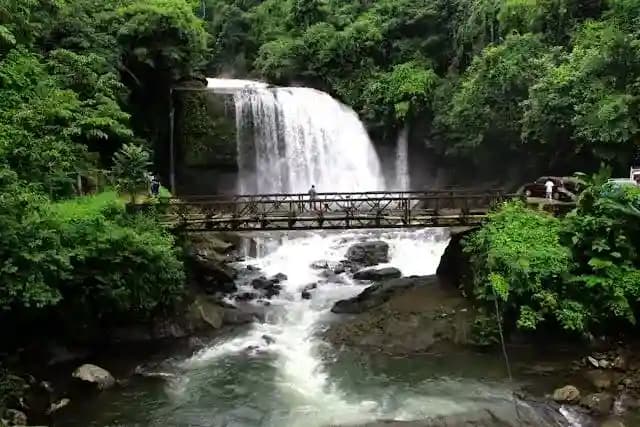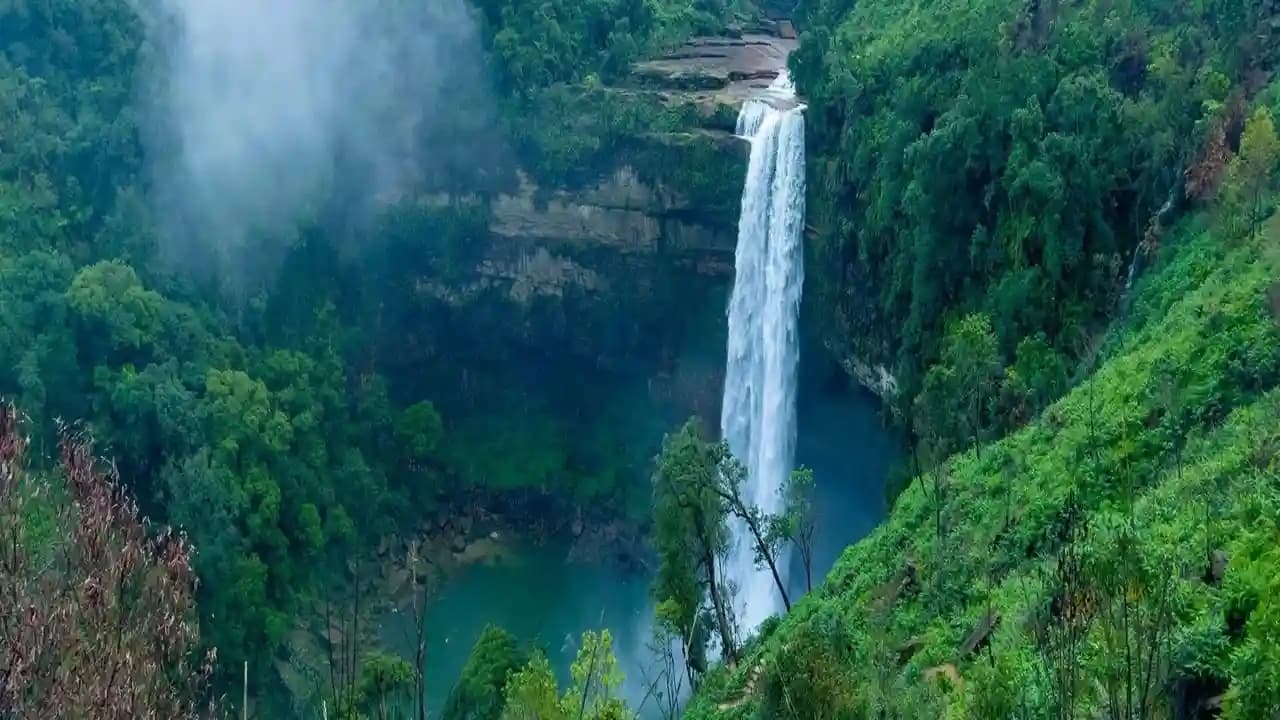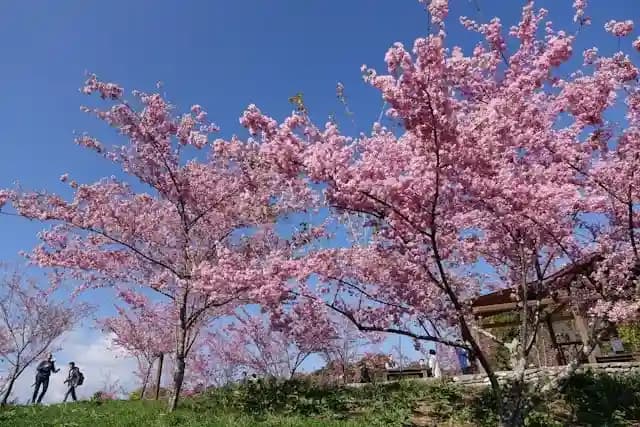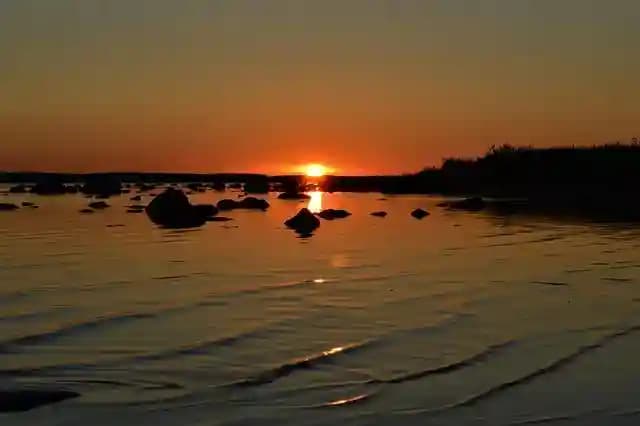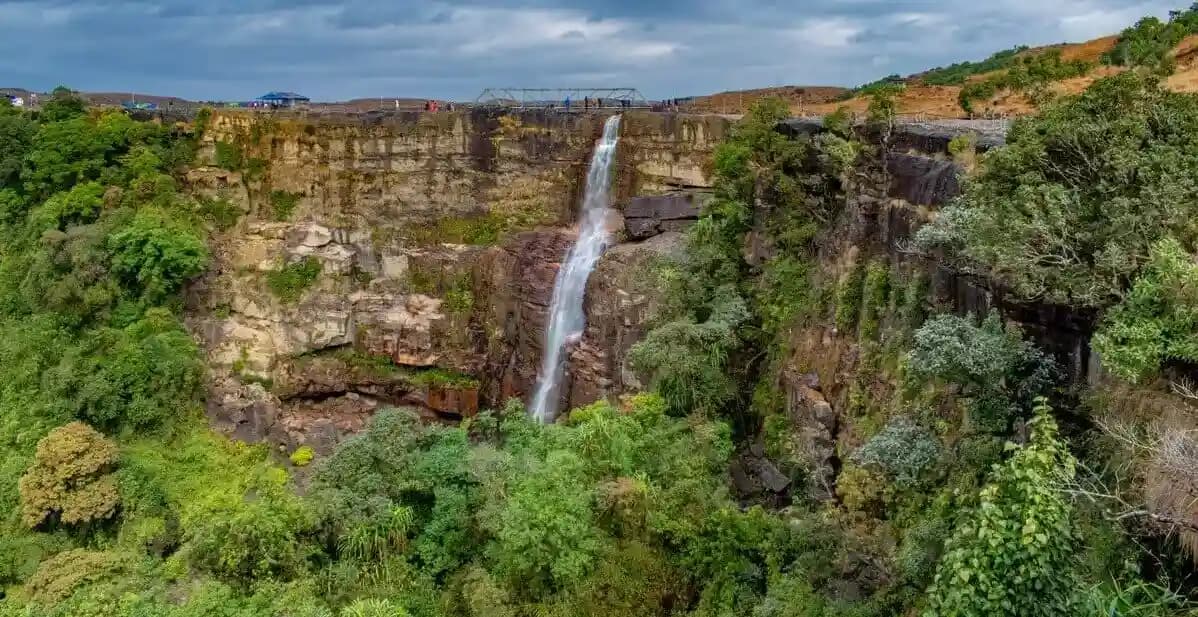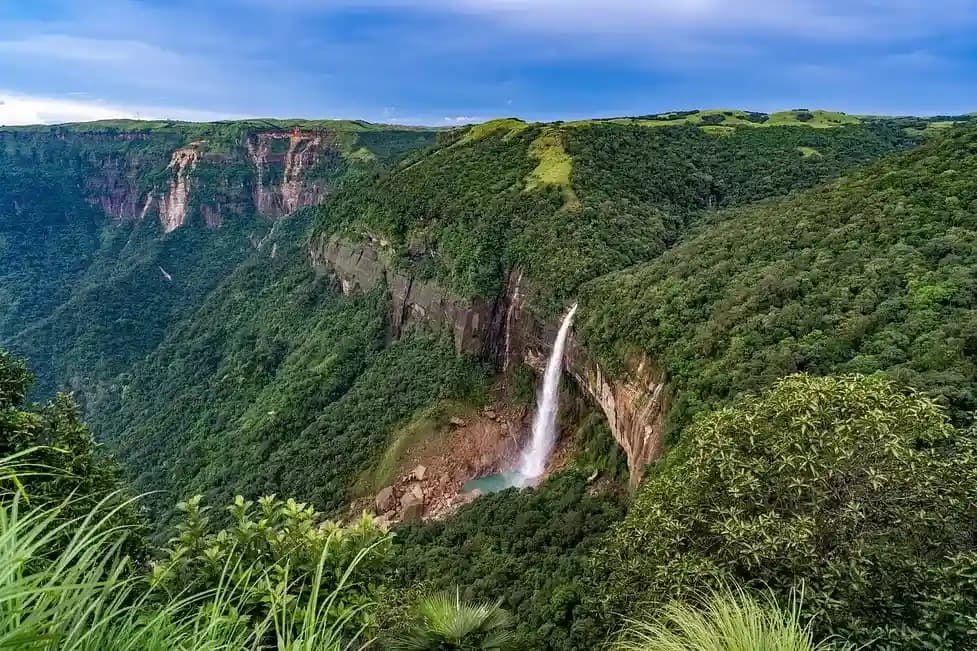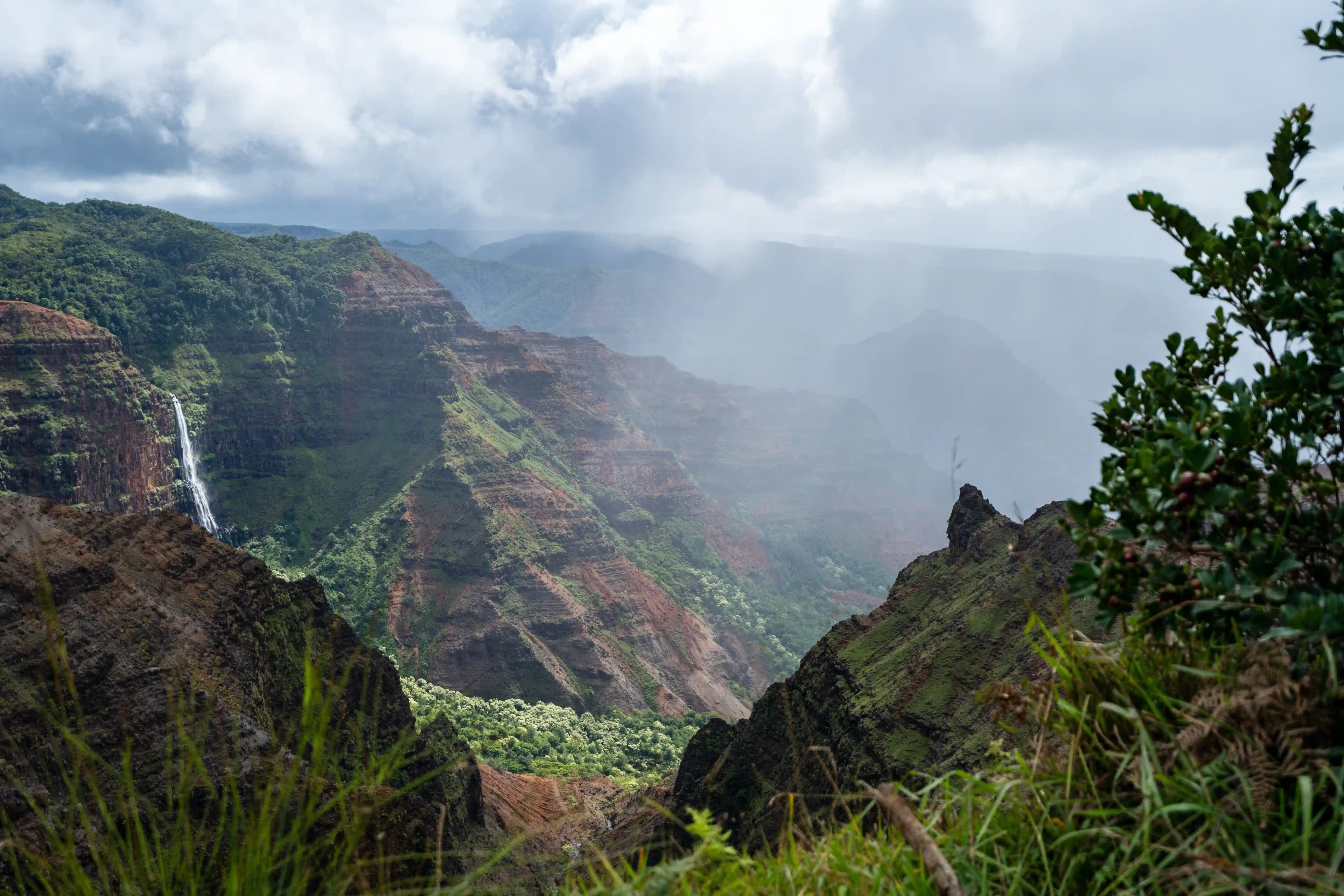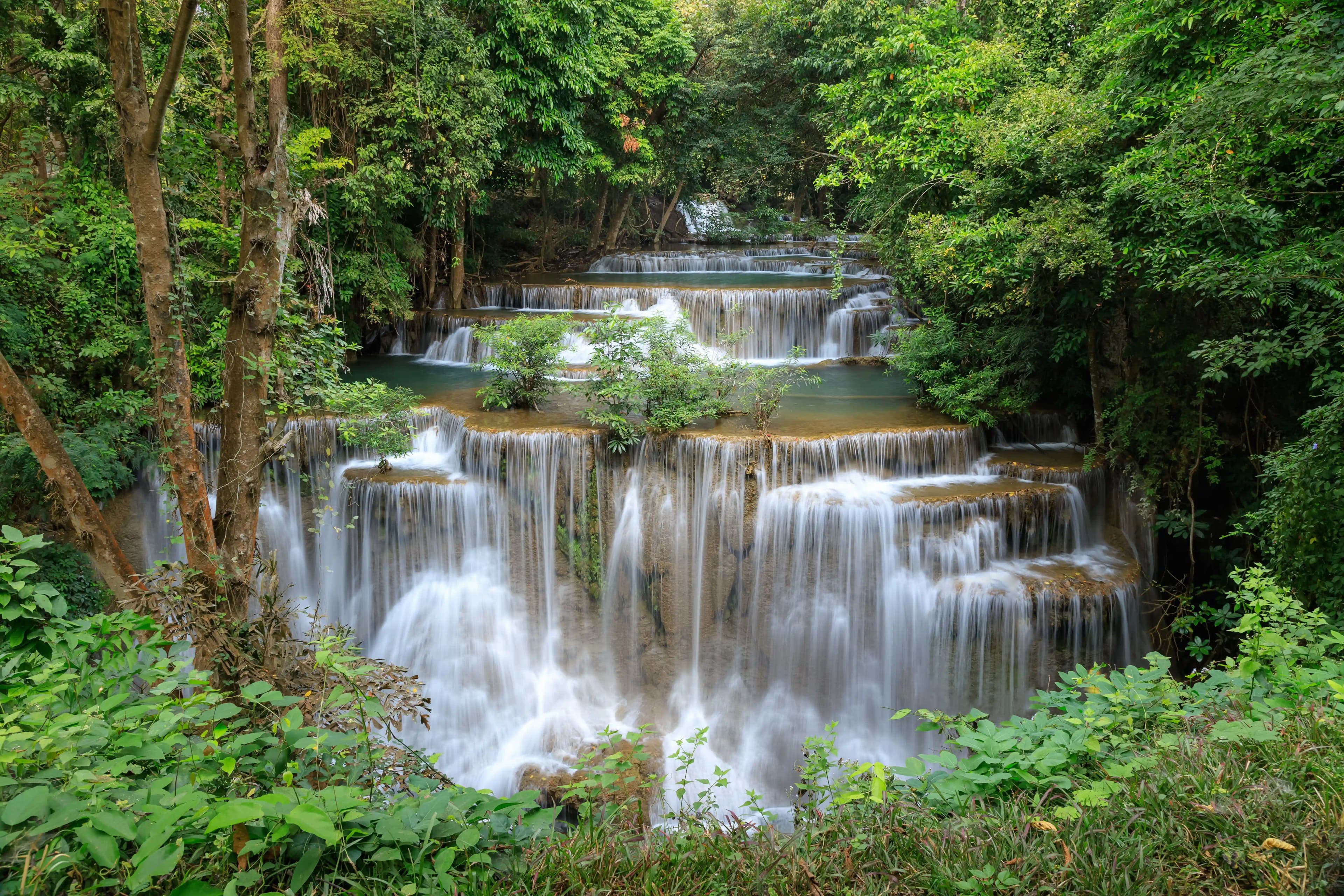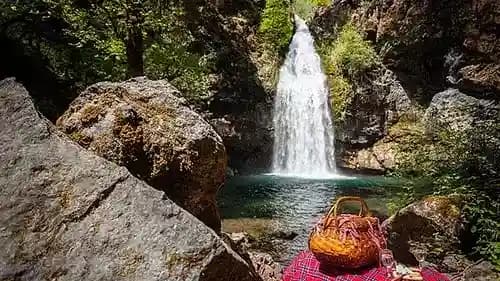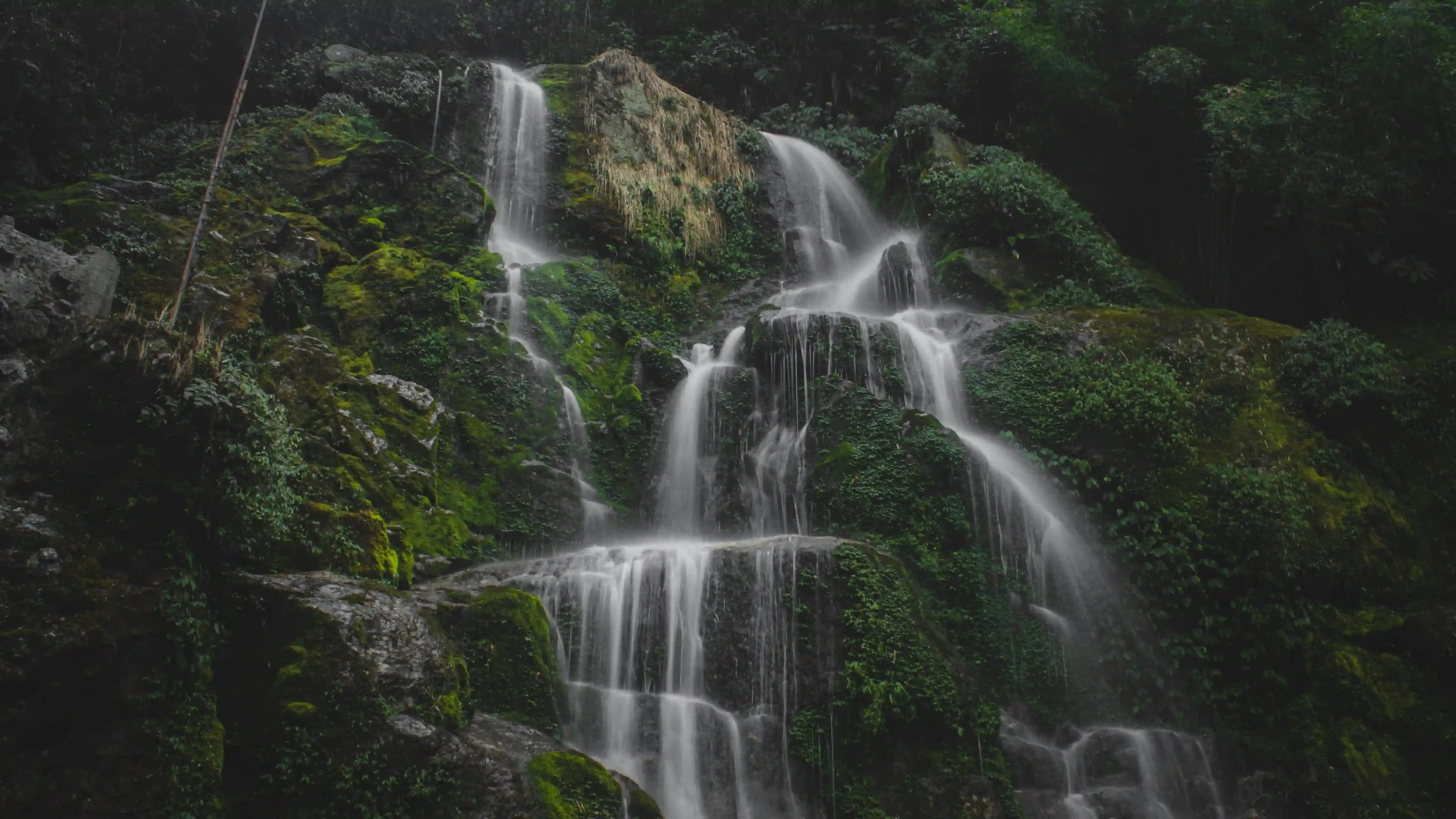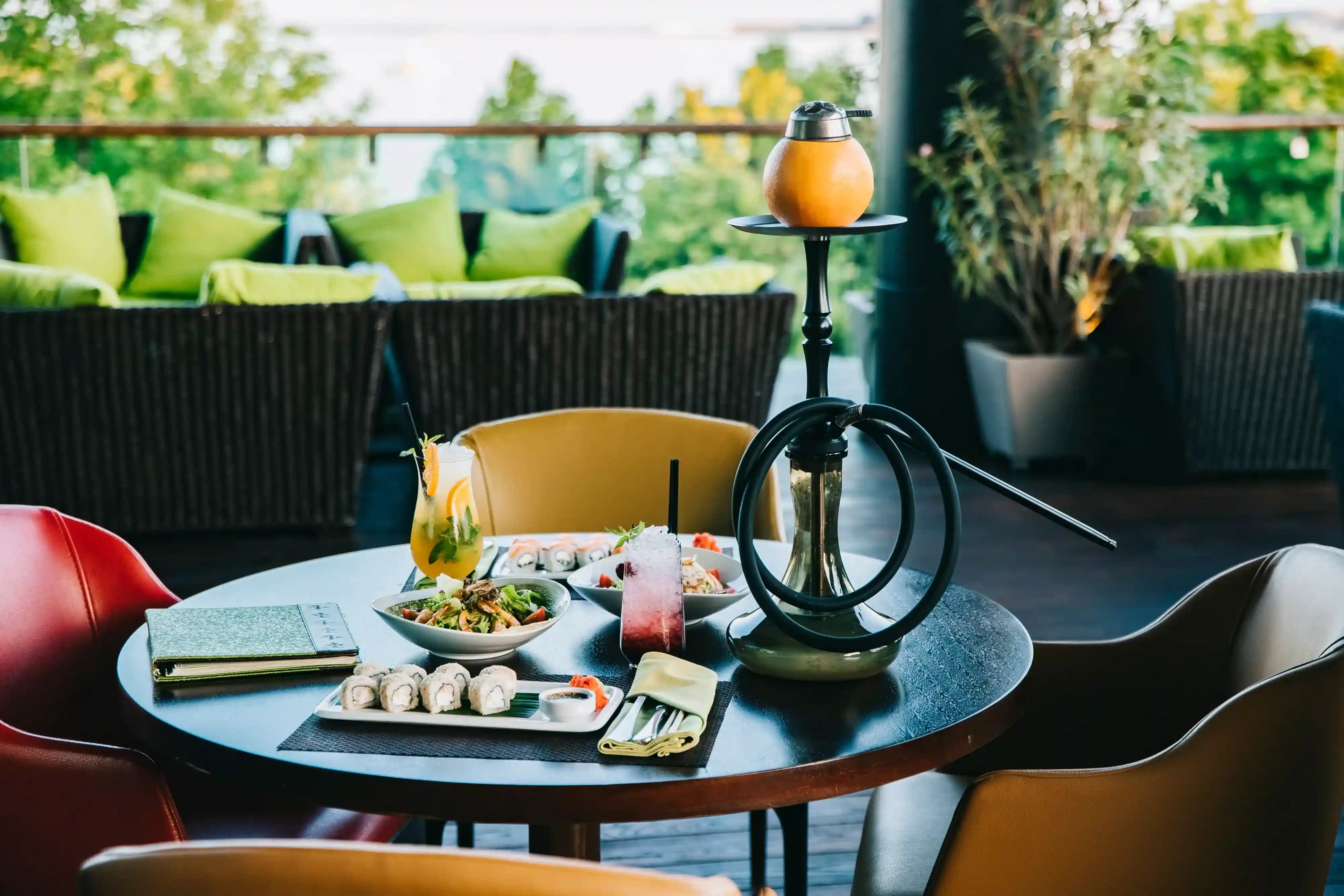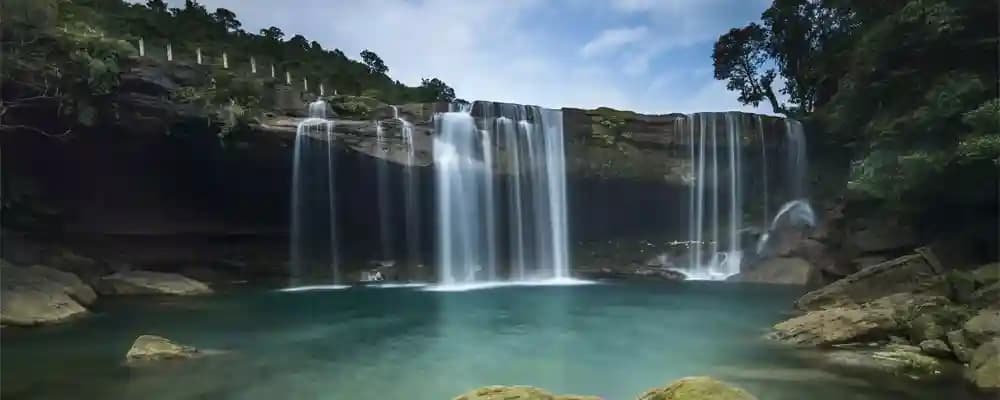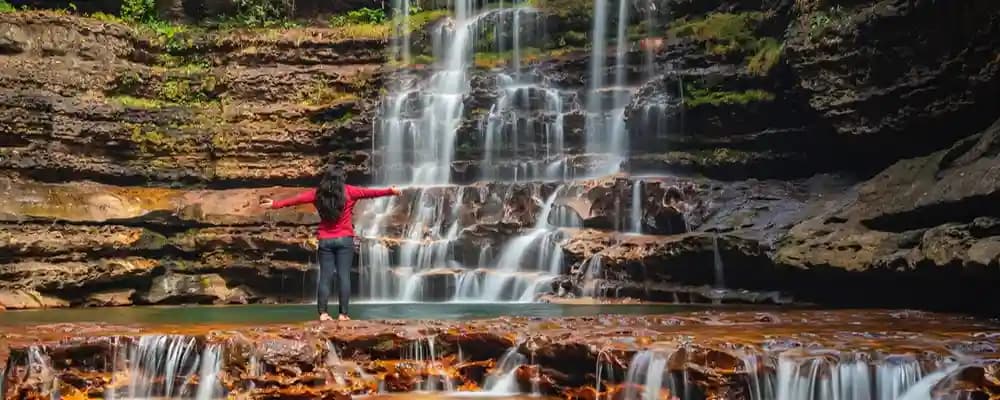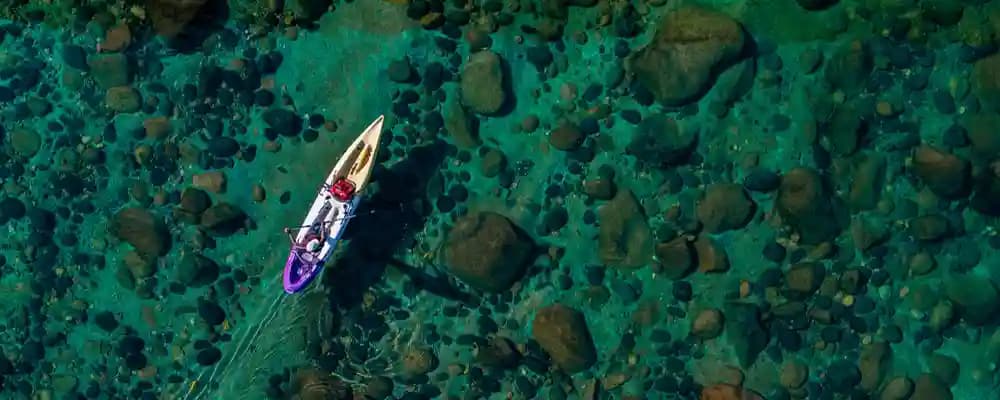The Nohsngithiang Falls is a beautiful waterfall located in the heart of Meghalaya. It is also known as Seven Sisters Waterfall because it has seven streams falling together. This place is full of green forests and lovely views. If you love nature, taking photos, or just want a break from your busy life, Nohsngithiang Falls is a great place to visit. It is one of the top spots in many Meghalaya tour packages. People come here to enjoy the fresh air, calm sound of water, and the beauty all around. In this blog, we will tell you more about this amazing waterfall. You can even explore it online with just one click. It is truly a gift of nature waiting to be seen.
All About Nohsngithiang Falls Meghalaya:
1. Location and Significance
Nohsngithiang falls is located in the East Khasi Hills district of Meghalaya near the village of Mawsmai. This splendid waterfall is an intrinsic aspect of the touristics sites in the region and a must see for anybody visiting Meghalaya. The best time to view the falls is during the monsoon period, that is, in the period from June to September when the flow of water is at its best and can cause an awesome display. The word Nohsngithiang means ‘jump and seven streams’ in Khasi language: ‘noh-jump’ and ‘sngi thiang-sevens’ represents the local System, its Seven Streams. This waterfall is also referred to as the Seven Sisters Waterfall because of the numerous segmentations each comprising seven sections.
2. Nohsngithiang Falls in Hindi
To give a Hindi aspect to this waterfall, the Nohsngithiang Falls in Hindi is also known as ”सात बहनें झरना” (Saat Bahnen Jharna) by Hindi speaking tourists or visitors. This translation is analogous to its English equivalent, the Seven Sisters Waterfall, which refers to the waterfall’s seven streams. They, in fact, remain an object of major attractions for many Indians not only because of their stunning beauty but because of historical and picturesque value as well. To the surprise of many, one can easily hire local guides who will provide information in Hindi and this makes it very easy for those who may not understand English to appreciate the falls.
3. Nohsngithiang Falls pronunciation
Perhaps, one of the most frequently asked questions when it comes to visiting Nohsngithiang Falls is the right way to pronounce the name. It may seem so when you hear or read the name, but in the course of time, one is able to master it. “Nohsngithiang falls pronunciation is a bit tricky but the proper way is Noh-shing-tee-ang,” I learned that ‘Noh’ is like saying ‘no’ in English, ‘shing’ is developed from ‘sing’ and ‘tee-ang’ is said in such a way that you imagine ‘t’ is soft and ‘ang ‘ is like in the word ‘song’.
The important characteristics of Nohsngithiang Falls can be described in the following points:
Height and Magnificence: The extent of this waterfall is around 315 meters which makes Nohsngithiang falls one of the best waterfalls in India. The water flow at the falls is even more spectacular during the monsoon season due to the availability of a lot of water from the melting ice.
Scenic Surroundings: Much as within the upper reaches, Nohsngithiang falls has vegetation and steep cliffs whereby tourists can enjoy their natural exploration. The area is filled with forests, hills and valleys which makes the area suitable for photographs and nature walks.
Cultural Significance: They themselves or the Khasi people consider the Nohsngithiang Falls a landmark not only of natural view but also an emblem of cultural significance for the area. The falls therefore symbolize unity of the Khasi people and their land, an aspect that has been fostered over time.
Best Time to Visit: The best time to visit Nohsngithiang falls is during the monsoon because the amount of water in the falls will be optimum between June and September. July is said to be the best time to visit the falls as all the seven streams are at their full strength in terms of force, falling over the cliffs.
Conclusion
One cannot refer to Nohsngithiang Falls just as a waterfall peculiar as it looks like a masterpiece of nature. Besides its size and beauty as well as the historical and cultural monuments it encompasses, it is one of the charmed assets of Meghalaya. In terms of the aesthetic angle, the check-in photo, the touch with the native origin, and the experience of seeing one of the tallest waterfalls in India, Nohsngithiang never leaves one’s imagination.
If you are planning for Nohsngithiang Falls then Capture a Trip will help in planning your trip with ease and comfort. These professionals will spare time to only work on finding the best travel plans for your vacation in Meghalaya tour, departing your stress.
Frequently Asked Questions:
1. Where is the Nohsngithiang Falls situated?
Nohsngithiang Falls is situated in the vicinity of the Mawsmai village, in the East Khasi Hill of Meghalaya state, India. This is among the most visited waterfalls in the region.
2. What is the pronunciation of the name of this waterfall: Nohsngithiang Falls?
Actually the pronunciation should be Noh-shing-tee-ang as the name has its origin from Khasi language.
3. When is the best time to Travel to Nohsngithiang Falls?
It is recommended that the Nohsngithiang Falls should be visited in the monsoon period that is from June to September.
4. What makes the Seven Sisters Waterfall so special and unique?
Seven Sisters Waterfall or known as Nohsngithiang Falls is important due to its tremendous fauji, cultural connection with Khasi locals, and its attractiveness to tourists in Meghalaya.
5. Are there guides for the Nohsngithiang Falls that can communicate in Hindi?
Indeed, most of the local guides speak Hindi and therefore, Hindi speaking tourists have a better shot at enjoying the natural features of Nohsngithiang Falls as well as appreciating their importance.







